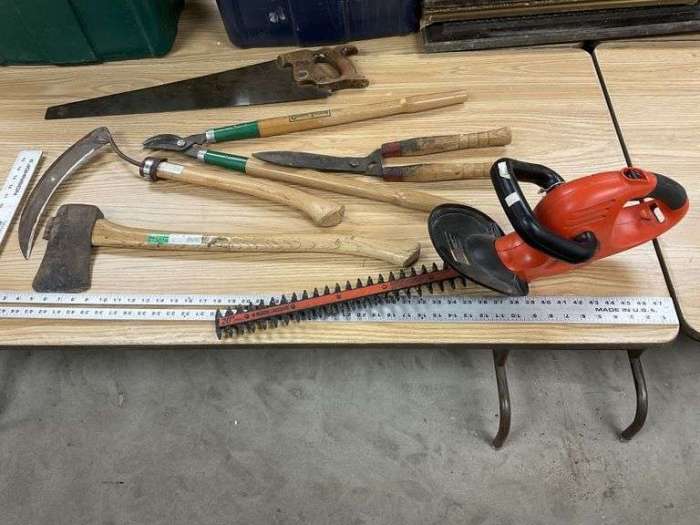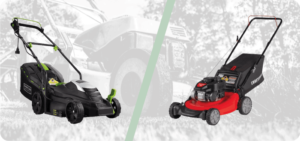
Yard tools for small spaces are essential for urban gardeners and homeowners with limited outdoor areas. In today’s fast-paced world, the demand for efficient and versatile gardening tools has never been greater. This overview explores the must-have tools that fit seamlessly into compact areas, ensuring that even the smallest gardens can thrive with the right equipment.
From multi-functional devices to lightweight options, we will delve into selections that not only cater to your gardening needs but also maximize storage efficiency. With clever organization and maintenance strategies, you can keep your tools handy and ready for use, all while maintaining a safe environment around your home.
Yard Tool Selection for Limited Areas

Creating and maintaining a beautiful garden in a compact space can be challenging, but with the right selection of yard tools, it becomes manageable. Choosing the right tools not only maximizes efficiency but also enhances the gardening experience. This guide will highlight essential yard tools that fit snugly into limited areas, ensuring you can work effectively without feeling cramped.
Essential Yard Tools for Small Spaces
When dealing with limited gardening areas, having the right tools is essential. The following tools are designed specifically for compact gardens, allowing for ease of use and effective maintenance without taking up excessive storage space.
- Hand Tools: Tools such as trowels, hand rakes, and weeders are perfect for small gardens. They allow for precise movements and are easy to maneuver in tight spaces.
- Secateurs: A good pair of pruning shears is essential for maintaining plants. They are lightweight and can be used for various tasks, from trimming to shaping the plants.
- Garden Fork: A compact garden fork can assist with soil aeration in small plots, making it easier to cultivate the ground without needing larger tools that are cumbersome in restricted spaces.
Multi-Functional Tools for Compact Gardens
Maximizing the utility of each tool is crucial in small spaces. Multi-functional tools can save space and provide versatility for various gardening tasks.
- Garden Kneeler and Seat: This dual-purpose tool serves as both a kneeling pad and a seat, making gardening more comfortable while also providing storage for small tools.
- Telescopic Pruners: These pruners can be adjusted in length, allowing easy access to high branches without the need for a ladder. They are lightweight and compact for storage.
- Multi-Tool Garden Hoe: Combining a hoe, rake, and weeder, this tool is invaluable for small plots. Having multiple functions in one tool saves space and time.
Lightweight Options for Easy Storage and Maneuverability
When space is at a premium, lightweight tools become essential for effective gardening. They are easier to handle and store, making them ideal for small areas.
- Fiberglass Rake: Unlike traditional metal rakes, fiberglass rakes are lightweight and durable. They can be easily maneuvered in tight spaces without causing strain.
- Compact Lawn Mower: There are several models designed for small yards that are both lightweight and easy to push, making lawn maintenance less of a chore.
- Portable Garden Cart: A small, foldable garden cart can be a handy asset for moving tools, soil, or plants around without the bulk of larger carts.
Organizing Yard Equipment Efficiently
Proper organization of yard tools is essential, especially in small spaces like garages or sheds. With limited room, it’s vital to implement smart storage solutions that not only maximize space but also keep your tools accessible and in good condition. Effective organization can make yard work more enjoyable and less of a hassle.One efficient method of organizing yard equipment is to utilize vertical space.
Wall-mounted racks and pegboards allow you to hang tools such as rakes, shovels, and brooms, freeing up floor space for larger items. Additionally, incorporating shelves and storage bins can help categorize smaller tools and supplies, ensuring everything has its place. Below are some effective storage solutions that can help make the most out of your limited area.
Creative Storage Solutions for Maximizing Space
Creative storage solutions can significantly enhance the functionality of a small garage or shed. Here are several methods that can help you keep your yard tools neatly organized:
- Wall-Mounted Racks: These racks are perfect for hanging long-handled tools. They can be installed at various heights, making them adjustable to suit your needs.
- Pegboards: A versatile option that allows you to customize the arrangement of your tools. Pegboards can accommodate hooks, shelves, and baskets for various tool types.
- Vertical Tool Organizers: These compact units can hold multiple tools in a small footprint, often with built-in racks for smaller items.
- Magnetic Strips: Ideal for metal tools, magnetic strips can be mounted on walls to keep your tools visible and easily accessible.
- Storage Bins: Clear bins can help you categorize smaller items like gardening gloves, seeds, and hand tools, making it easy to see what you have at a glance.
Each of these solutions helps to keep your tools organized while maximizing available space.
Comparison of Different Storage Options
To better understand the various storage options available, the following table compares key features, pros, and cons.
| Storage Option | Pros | Cons |
|---|---|---|
| Wall-Mounted Racks | Maximizes vertical space, keeps tools off the ground | Installation may require drilling into walls |
| Pegboards | Customizable layout, easy access to tools | Requires wall space; tools can fall if not secured properly |
| Vertical Tool Organizers | Compact design, holds multiple tools | May not fit larger tools, limited capacity |
| Magnetic Strips | Visually appealing, keeps tools accessible | Only suitable for metal tools, requires a suitable mounting surface |
| Storage Bins | Good for categorizing small items, stackable | Can take up floor space, may require searching for specific items |
Utilizing these organizational methods not only enhances efficiency but also transforms your small space into a functional area for your yard work.
Maintaining and Using Yard Tools Around Stone Brick and Pools
Maintaining yard tools properly is essential when working in outdoor areas that feature stone brick surfaces and swimming pools. These environments often require specialized care to ensure that tools perform effectively while minimizing damage to surrounding features. Understanding the unique maintenance routines and safety considerations can help keep your outdoor spaces looking pristine and functioning well.When it comes to maintaining tools used on stone brick surfaces, it is crucial to consider the materials involved.
Stone brick can be susceptible to scratches and chips, so using tools that are specifically designed or padded for such surfaces is advisable. Regular cleaning is essential: after each use, tools should be wiped down to remove any dirt or debris that might scratch the surface. Additionally, consider using a protective lubricant on metal parts to prevent rust, especially if the tools will be stored outdoors.
This maintenance routine not only prolongs the life of the tools but also protects your stone brick surfaces from unintended damage.
Considerations for Using Yard Equipment Near Swimming Pools and Spas
Working near swimming pools and spas presents unique challenges that necessitate precautions and special practices. The proximity to water increases the risk of slips and electrical hazards, making it essential to implement strategies that prioritize safety and efficiency.It is important to keep yard tools dry and away from the pool’s edge to prevent slips and accidents. Always inspect electrical equipment for frayed cords or damaged plugs before use.
The use of battery-operated or cord-free tools is often preferable in these environments as they eliminate the risks associated with water and electricity. When mowing or trimming around pools, be vigilant about debris that may fall into the water, as this can affect water quality and safety.To ensure a safe working environment around pools and spas, consider the following safety measures:
- Keep all tools and materials away from the pool’s edge to prevent accidents.
- Utilize non-slip footwear and work gloves for better grip and control.
- Ensure that all electrical tools are properly grounded and suitable for outdoor use.
- Regularly check the area for any obstacles or hazards that may pose a risk while working.
- Establish a dry working zone to store tools and equipment when not in use to minimize slip risks.
“Safety is not just a priority; it is a value that protects lives and enhances work efficiency.”
Keeping these considerations in mind while maintaining and using yard tools around stone brick surfaces and pools ensures not only the longevity of your tools but also the safety of both the worker and the environment. Making these practices a routine part of your outdoor maintenance will help create a safer and more enjoyable space.
Summary

In conclusion, understanding the best yard tools for small spaces can transform your gardening experience, making it both enjoyable and productive. By selecting the right tools and implementing smart storage solutions, you can make the most of your limited outdoor area. Embrace the potential of small spaces and keep your yard flourishing with the right approach and knowledge.
Detailed FAQs
What are the best tools for small gardens?
Some of the best tools include hand trowels, pruning shears, and lightweight rakes that can easily fit into tight spaces.
How do I store yard tools in a small shed?
Use wall-mounted racks and pegboards to organize tools vertically, freeing up floor space for other items.
Are there any multi-functional yard tools?
Yes, tools like a garden hoe with interchangeable heads can serve multiple purposes, reducing the need for extra equipment.
What safety measures should I consider for yard work near pools?
Always keep electrical tools away from water, and ensure that any manual tools are free from rust or decay to prevent accidents.
How can I maintain tools used around stone surfaces?
Regularly clean your tools to remove debris and avoid corrosion, and check for any damage that could affect their performance.





